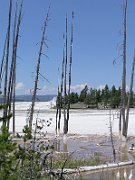
Image 1 of 87
Trees absorb the minerals and die, slowly turning to stone
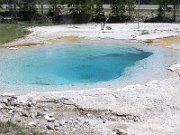
Image 2 of 87
The water is mostly just below the boiling point
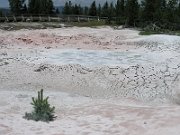
Image 3 of 87
That's one tenacious pine tree!
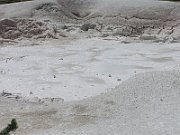
Image 4 of 87
The mud pots make these gloopy bloopy sounds as the bubbles burst
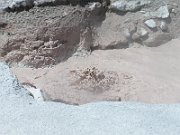
Image 5 of 87
Different color clays make different color mud
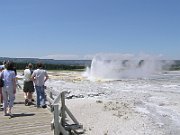
Image 6 of 87
Some geysers erupt almost continuously
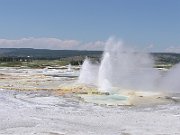
Image 7 of 87
Sometimes, nearby geysers are hydrologically linked
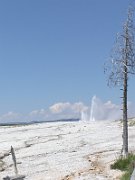
Image 8 of 87
The runoff makes for a weird landscape
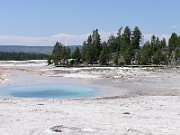
Image 9 of 87
Water colors reflect the minerals in it
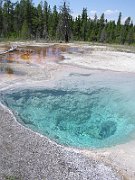
Image 10 of 87
The colors often accurately indicate water temperature
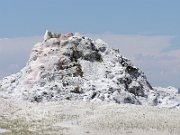
Image 11 of 87
The White Dome Geyser erupts about every 24 minutes. We waited . . .
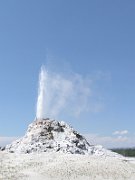
Image 12 of 87
. . . and voila! The geyser reaches about 30ft and lasts for about 2 minutes
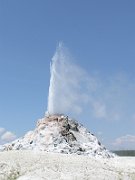
Image 13 of 87
The sounds of an eruption add a lot to the visuals
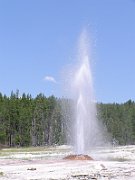
Image 14 of 87
Pink Cone Geyser erupts about every 11 hours
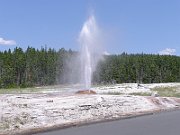
Image 15 of 87
The eruption reaches about 25ft and lasts about 45 minutes
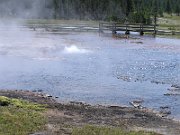
Image 16 of 87
Firehole Lake contributes water to the Firehole River
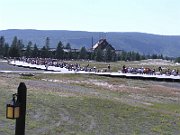
Image 17 of 87
Crowds gathered to witness an Old Faithful eruption
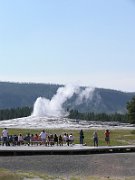
Image 18 of 87
Old Faithful isn't the most regular geyser in the park
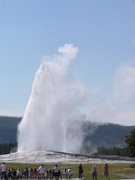
Image 19 of 87
But it's certainly the most popular and most predictable
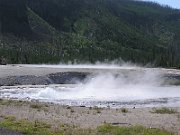
Image 20 of 87
Some geysers erupt from within springs or ponds
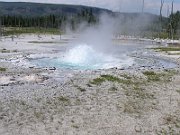
Image 21 of 87
They often throw a lot of water around
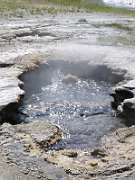
Image 22 of 87
Almost all of them smell strongly of sulphur
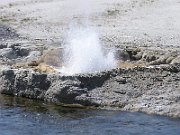
Image 23 of 87
Cliff Geyser is a tease - it splashes a lot but rarely goes full height
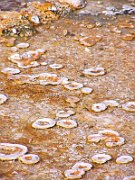
Image 24 of 87
Bacterial mats grow in the runoff - the temperature determines the type of bacteria
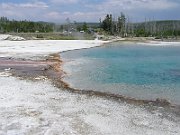
Image 25 of 87
Some hot pools get very large
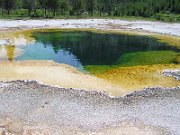
Image 26 of 87
Some have spectacular coloring
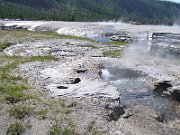
Image 27 of 87
You can see why early reports of these things were not believed
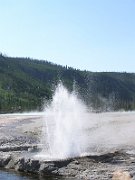
Image 28 of 87
Cliff Geyser teasing again. Never did see a 40ft eruption
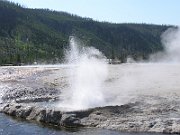
Image 29 of 87
There was one Japanese family that kept posing with the geyser
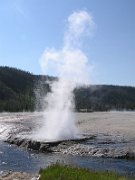
Image 30 of 87
They never did get an eruption and smiles at the same time
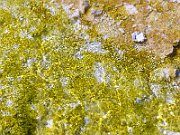
Image 31 of 87
It's bacteria, not gold - but ain't it purty?
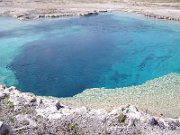
Image 32 of 87
Most water is so clear you can see deep into the pool
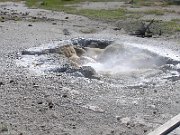
Image 33 of 87
And some just spit steam at you
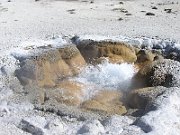
Image 34 of 87
Yellowstone has more geysers than all the rest of the world combined
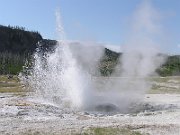
Image 35 of 87
Some of them are very dramatic
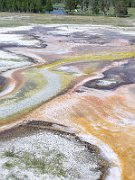
Image 36 of 87
More gorgeous colors
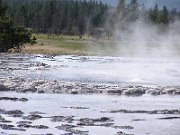
Image 37 of 87
Great Fountain Geyser erupts every 10 hours or so
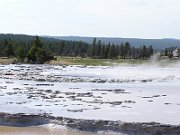
Image 38 of 87
Eruptions start about an hour after the crater spills onto the terraces
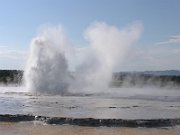
Image 39 of 87
Good eruptions can reach 150ft. This one got half that
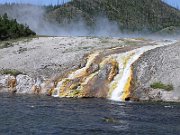
Image 40 of 87
Hot water flows into the Firehole River
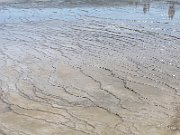
Image 41 of 87
Slow moving runoff makes terraces that are very complex
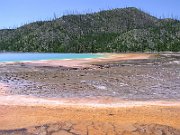
Image 42 of 87
The colored bacteria stain the rocks beautifully
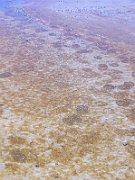
Image 43 of 87
People can't walk in the water, but the elk and bison do
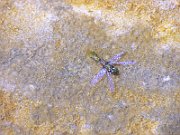
Image 44 of 87
We were told by a frequent visitor that this dragonfly fell into the water at least four years ago. Well preserved.
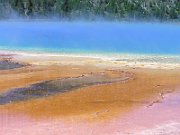
Image 45 of 87
Spectacular
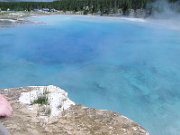
Image 46 of 87
Some of these sights are absolutely unique on this planet
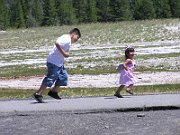
Image 47 of 87
Kids hurrying to an Old Faithful eruption - or maybe ice cream.
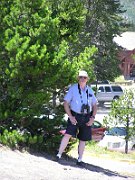
Image 48 of 87
Some of us exploit the shade when possible
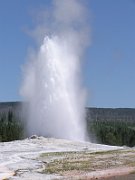
Image 49 of 87
Old Faithful may be predictable, but it's still spectacular
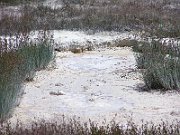
Image 50 of 87
Very few plants can grow where the acid content is highest
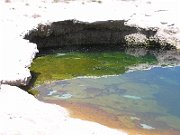
Image 51 of 87
Cool colors
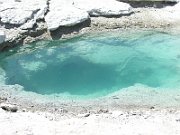
Image 52 of 87
It's like you can see forever down there
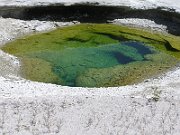
Image 53 of 87
Yellowstone is at about 7,000 ft - water boils at about 206 degrees
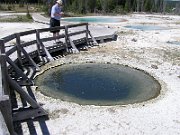
Image 54 of 87
The camera in the cell phone is our backup camera
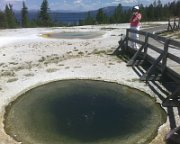
Image 55 of 87
Judy uses the real camera most of the time
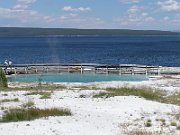
Image 56 of 87
The West Thumb Geyser Basin adjoins Yellowstone Lake
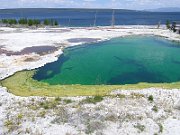
Image 57 of 87
The geysers and the lake are not hydrologically connected
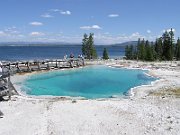
Image 58 of 87
Some geyser water runs into the lake, but not enough to affect it much
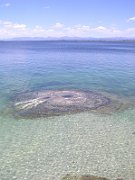
Image 59 of 87
Fishing Hole Geyser is in the lake; folks used to cook their fish in there
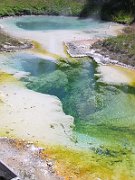
Image 60 of 87
More great colors
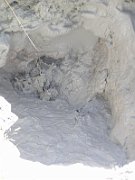
Image 61 of 87
Takes a lot of energy to move that mud
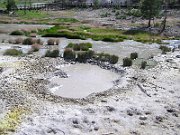
Image 62 of 87
This is NOT a dinosaur footprint.
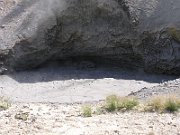
Image 63 of 87
Mud Volcano - you can see why it's named that
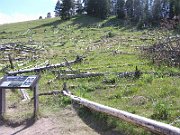
Image 64 of 87
These trees died after a 1959 earthquake raised the soil temp to 180 degrees
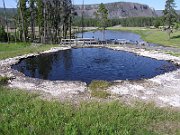
Image 65 of 87
Gee that's nice
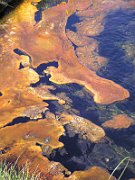
Image 66 of 87
Bacteria mats are living pool covers
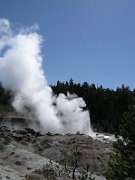
Image 67 of 87
Steamboat Geyser is the tallest geyser in the world
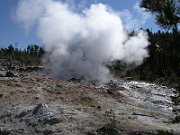
Image 68 of 87
It erupts to heights of 330 feet or more every few years. Today it sputtered
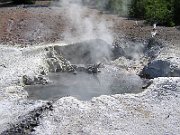
Image 69 of 87
Look! Natural carbonation. Call Perrier!
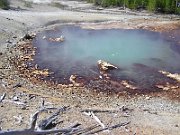
Image 70 of 87
Echinus Geyser erupts once the crater is full
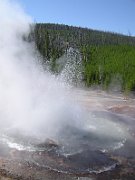
Image 71 of 87
The explosive eruptions reach 50 to 100ft
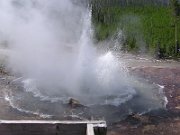
Image 72 of 87
It goes off every couple of hours. We both sunburned waiting for it
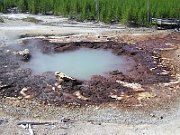
Image 73 of 87
After the eruption, the crater drains, then the process repeats
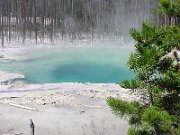
Image 74 of 87
That those trees ever grew at all shows how the thermal activity changes
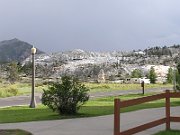
Image 75 of 87
The terraces at Mammoth Hot Springs
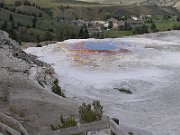
Image 76 of 87
Looking down at the "village" of Mammoth from the top of the terrace
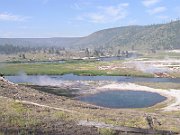
Image 77 of 87
Earlier in the day, there's more steam
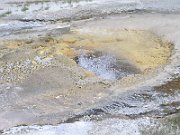
Image 78 of 87
Some geysers are small (and usually noisy)
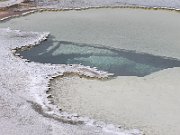
Image 79 of 87
Shelves inside pools show previous water levels
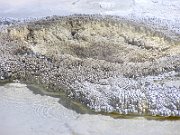
Image 80 of 87
Looks like the inside of some caves we've seen
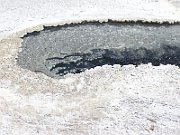
Image 81 of 87
This is Ear Spring, named for its shape
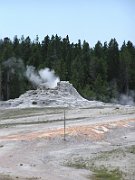
Image 82 of 87
Castle Geyser is usually one of the most predictable geysers
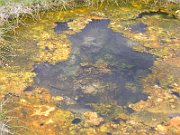
Image 83 of 87
Marvelous colors and formations
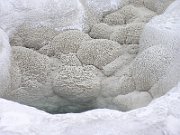
Image 84 of 87
Almost looks like the rocks are alive
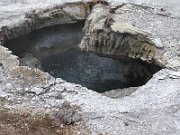
Image 85 of 87
Water is lethally hot
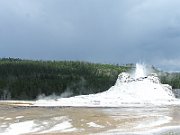
Image 86 of 87
Castle Geyser nomally erupts to 80 ft every 10 hrs. But not today
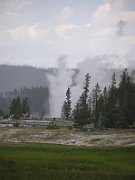
Image 87 of 87
Grand Geyser can hit 200 ft. It went off just as we were leaving.